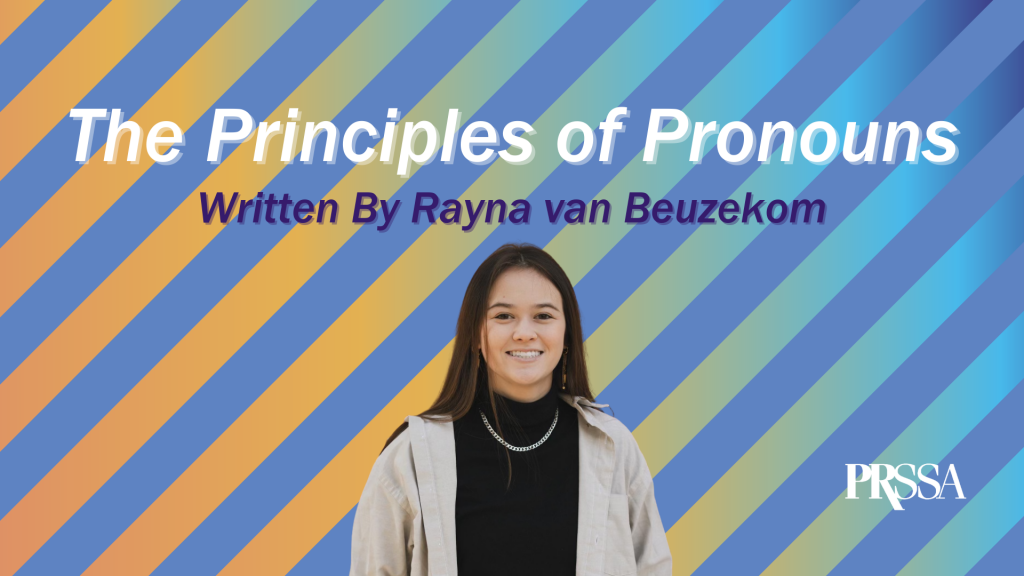The Principles of Pronouns

Preface: Using she/they pronouns does not make me understand the trans experience. The following article is based on my personal experience using she/they pronouns. I have not and will not face the discrimination trans-identifying people do. I can only speak on behalf of myself.
Why Do Pronouns Matter?
I started using she/they pronouns last year. I identify as a cisgender queer woman. For some people, their gender identity does not match the one assigned at birth. For others, their gender identity does not end at womanhood or manhood, but they feel connected to those experiences. Gender is a spectrum, and pronouns are just a start.
Placing my pronouns in as many places as possible always seemed like the easiest choice I could make as an ally. My pronouns are in my Zoom name, Instagram bio, Twitter bio, email signature, Slack name and pretty much anywhere else that allows a name. When I introduce myself with pronouns, it demonstrates to transgender folks that they can tell me their pronouns. It shows that they are in a safe space and that I will not use incorrect pronouns. Explaining your pronouns, even as a cisgender person, can be the difference between someone feeling comfortable in a work environment or not. As communicators, we know language is power. When someone names their pronouns, they are asking for respect.
“He or She” Is Outdated
In a journalism class I took, students received five points off for every AP Style mistake. In this article alone, I would have received 45 points off of a 100 point paper. The AP Stylebook says I can’t use they/them/theirs pronouns for a singular person unless the use is essential. Use is essential when a person names their pronouns. Use is unessential when naming an arbitrary individual, resulting in “he or she” being used. Sometimes this makes writing classes feel invalidating.
Another rule we learn in writing classes is to be efficient with our words. We need to print as few words as possible. “He or she” is three words and seven characters, not including spaces. “They” is one word and four letters.
Apart from using “they” in place of “he or she,” neo pronouns are not allowed in AP Style. Neo pronouns are used by individuals who do not identify with the binary, nor feel connected to they/them/theirs pronouns. Examples include “ze” and “zir.”
“Taylor was hungry so ze went to the store to get zir food.”
In public relations, we talk about being ethical. When adhering to the PRSA Code of Ethics, shouldn’t we advocate for non-binary individuals? It’s unethical, even harmful, to misgender people, and we shouldn’t be okay doing so just because the AP Stylebook told us to.
How Can You Be A Better Ally?
For people who use more than one pronoun, interchange their pronouns. Use the pronoun that you think people use the least. For instance:
“They wanted strawberry ice cream. She was disappointed because the store only had chocolate.”
If you mess up, don’t draw greater attention to the mistake. Don’t make it a big deal, and don’t mess up again. One accident is not offensive, but if you don’t readjust, that’s offensive. People who identify with a different gender (or pronouns) than assigned at birth already receive unwanted attention. Making the situation awkward with excessive apologies can make them even more uncomfortable.
It is important that communicators remain cognizant of language and its impact on the LGBTQ+ community. Pronouns are only the beginning. Using inclusive language is imperative to an ethical media representation of the LGBTQ+ community. Add your pronouns to your email signature and consider supporting organizations like GLAAD or the Trevor Project.

